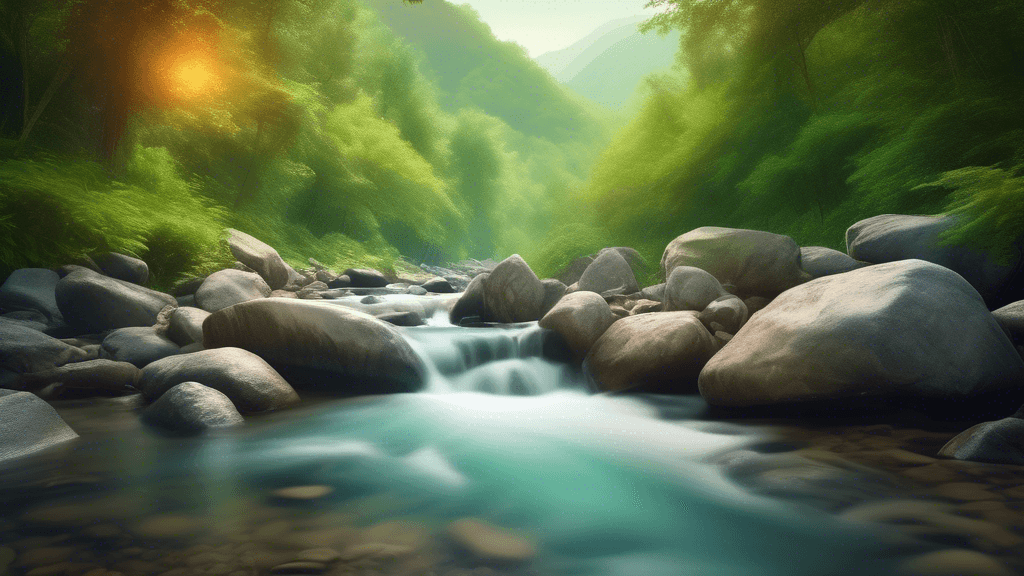
Capturing Tranquility: The Art of Stream Photography
Share
Introduction to the Art of Stream Photography
Stream photography, a specialized niche within the broader landscape photography genre, captures not just the physical play of light and water, but also conveys a deep sense of tranquility and fluid motion. But what exactly makes stream photography so captivating, and how can photographers, both amateur and seasoned, master this art to create mesmerizing images? This blog explores these questions, providing insights and practical advice that will help you harness the serene power of flowing water through your lens.
Understanding the Allure of Stream Photography
Streams, with their ceaseless flow and intertwined landscapes, offer an ideal subject for photographers looking to express both dynamism and peace. Whether it's a gentle brook or a swift creek, each stream presents a unique set of characteristics and challenges that can transform a simple photograph into a compelling story. But what attracts viewers and photographers alike to these waterways?
- Movement: The flowing water creates dynamic patterns that are both unpredictable and rhythmic.
- Reflections: Streams beautifully mirror the world around them, from overhanging trees to cloudy skies, adding depth and interest to photographs.
- Sound and Sensory Experience: The sound of water is universally soothing, and its capture in a visual medium can evoke a visceral, calming response in the viewer.
The challenge of stream photography lies in its fluid nature; no two moments are ever the same, shares John Doe, a renowned nature photographer. Capturing the essence of a stream requires patience and a keen eye for detail, skills that any photographer can develop over time.
Technical Considerations for Capturing Streams
To truly excel in stream photography, understanding and implementing certain technical settings is crucial. These include:
Camera Settings
- Shutter Speed: Slow shutter speeds are ideal for creating that silky water effect, usually ranging from 1/15 to several seconds, depending on the light and the speed of the water.
- Aperture: A smaller aperture (higher f-number) allows for a greater depth of field, ensuring both the foreground and background are in focus.
- ISO: Keep the ISO as low as possible to reduce noise, which is especially important in low light conditions typical of shaded streams.
Equipment Essentials
- TriPod: Stability is key in long exposure photography. A sturdy tripod will prevent any unwanted camera shake.
- Filters: Neutral density (ND) filters are vital for managing light intake and controlling exposure times without affecting the color of the image.
Compositional Techniques to Enhance Stream Photos
Composition in stream photography can dramatically affect the impact of the final image. Key techniques include:
- Leading Lines: Use the natural lines of the stream to lead the eye through the image, creating a journey for the viewer.
- Symmetry and Balance: Positioning the stream in the frame to create mirrored symmetry can be visually pleasing and enhance the natural beauty of the scene.
- Foreground Interest: Including rocks, leaves, or branches in the foreground can add depth and context to the photograph.
The Ethical Side of Stream Photography
As photographers venturing into natural habitats, maintaining an ethical approach towards environmental conservation is crucial. It's important to:
- Avoid disrupting the natural elements, including water flora and nearby wildlife.
- Leave no trace, ensuring that we preserve the beauty of our subjects for others to enjoy and photograph in the future.
Photographers have a unique responsibility, not just to capture, but also to conserve, notes environmental conservationist Jane Smith. This mindset helps ensure that our art does not come at the expense of the ecosystems we admire.
Conclusion: Crafting Your Stream Story
The art of stream photography transcends mere technique, tapping into the rhythms of nature and human emotion. By understanding the technical, compositional, and ethical dimensions of this craft, photographers can create images that not only showcase the beauty of streams but also convey deeper stories of tranquility and continuity in the natural world.
Whether you are a novice looking to explore this nurturing art form or an experienced photographer aiming to refine your skills, remember that each stream you encounter has its own tale. With patience, respect, and creativity, your photography can bring these silent, serene narratives to life. So why not grab your camera, head to the nearest stream, and start capturing the flowing essence of nature today?





